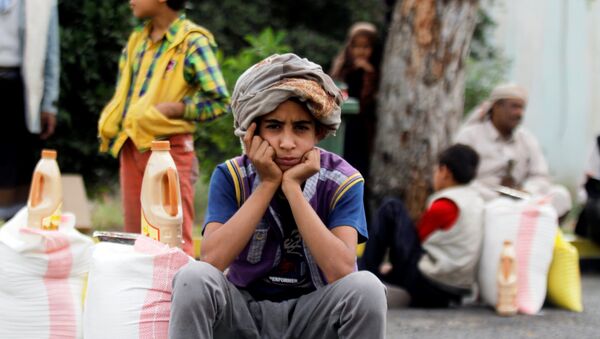Bypassing the UN
Yemen has been engulfed in a military conflict between the Saudi-backed government headed by Abd Rabbuh Mansur Hadi and Houthi rebels, the country’s main opposition force, since 2014. Hadi is also supported in the country’s predominantly Sunni south.
The conflict between the Houthis and the government in Sanaa is also seen as part of a regional power struggle between Shia-ruled Iran and Sunni-ruled Saudi Arabia.
Until 1990 Yemen existed as two separate countries — the Yemen Arab Republic in the north and the People's Democratic Republic of Yemen in the south. In 1990, after years of border conflicts, the two countries unified as the Republic of Yemen.
1994 saw a brief war between southern separatists and the central government. The rebellion was eventually crushed preventing the country’s breakup.
Tensions between the country’s south and north have remained though. In 2004 the Shiites living in northern Yemen on the border with Saudi Arabia rebelled in protest against the governments’ plans to adopt a Sunni version of Islam.
The armed conflict resumed when, after years of ruling the predominantly Sunni Yemen, Ali Abdullah Saleh joined forces with the Shiite Houthi opposition.
In 2015, President Abd Rabbuh Mansur Hadi resigned and soon after left the country.
The state apparatus, the army and the people have remained divided ever since with Houthi rebels and part of the army loyal to ex-President Saleh pitted against troops and militia forces loyal to ex-President Hadi.
After Houthis took power in 2015 forcing President Hadi into exile, Saudi Arabia, with a nod from Washington, launched a military campaign against the Houthi “junta.”
The United Arab Emirates, Bahrain, Kuwait, Jordan, Egypt, Pakistan, Morocco and Sudan joined in the fray by sending arms to the war-torn country.
The conflict grows
During its 18-month military campaign in Yemen the Saudi-led coalition has clawed back large territories including the strategic coastline and now controls the Bab el-Mandeb Strait, a narrow waterway linking the Red Sea with the Gulf of Aden, through which much of the world's oil shipments pass.
Houthis are still in control in the capital Sanaa and have managed to inflict serious losses on Saudi armored forces.
The US is on the Saudis’ side, while Israel and the EU’s top diplomat Federica Mogherini come out against Riyadh’s military operation in Yemen.
Russian President Vladimir Putin has urged the Arab states to resolve the conflict “without any outside intervention.”
Yemen is rich in oil and its southern port of Aden is a gateway to the Red Sea and the Suez Canal oil-laden tankers sail through on their way to Europe.
Small wonder that Saudi Arabia is so keen on establishing its control over these strategic areas where any careless move by anyone will set off a chain reaction fraught with war.
The US and its allies in Europe and the Middle East have proved unable to play the role of a wise supreme arbiter. All they do is plunge the countries they “liberate from dictators” into chaos.
Yemen is neck deep in civil war and it will take years and strong international effort to end the bloodshed, bring the warring sides to the negotiating table and sort out problems that have piled up for decades.






